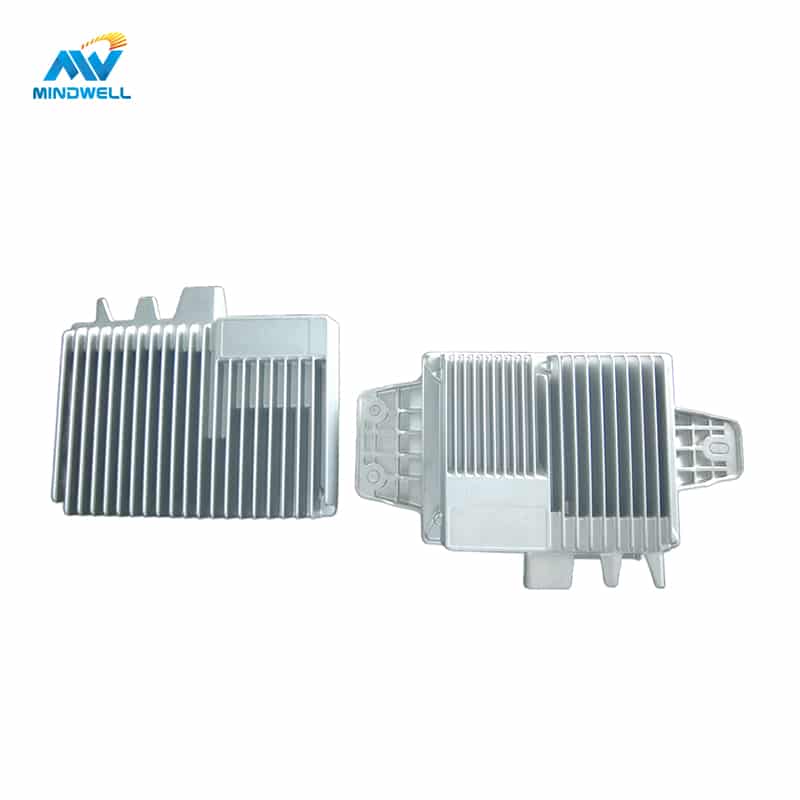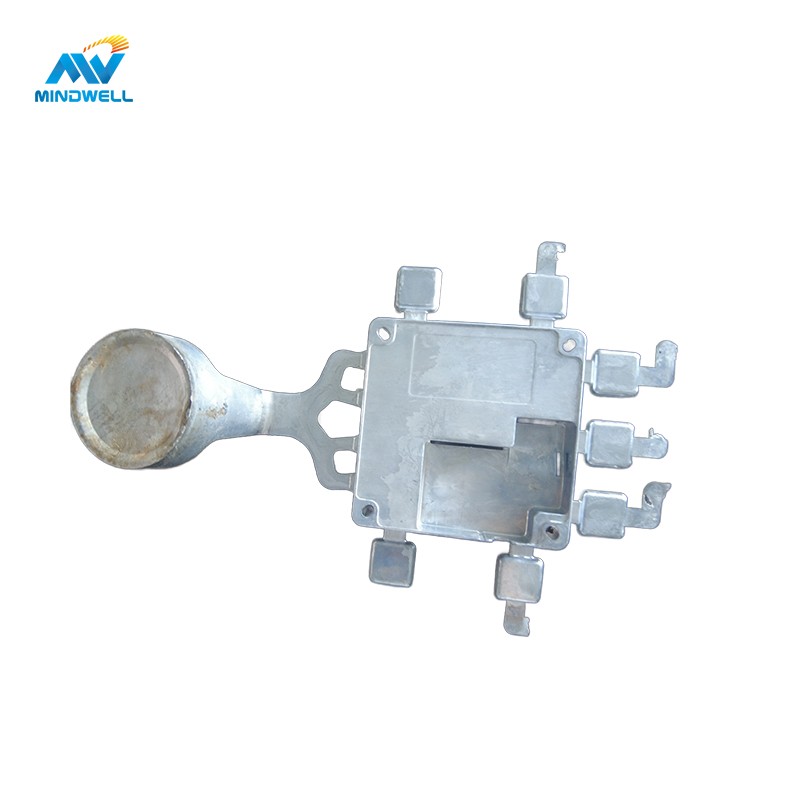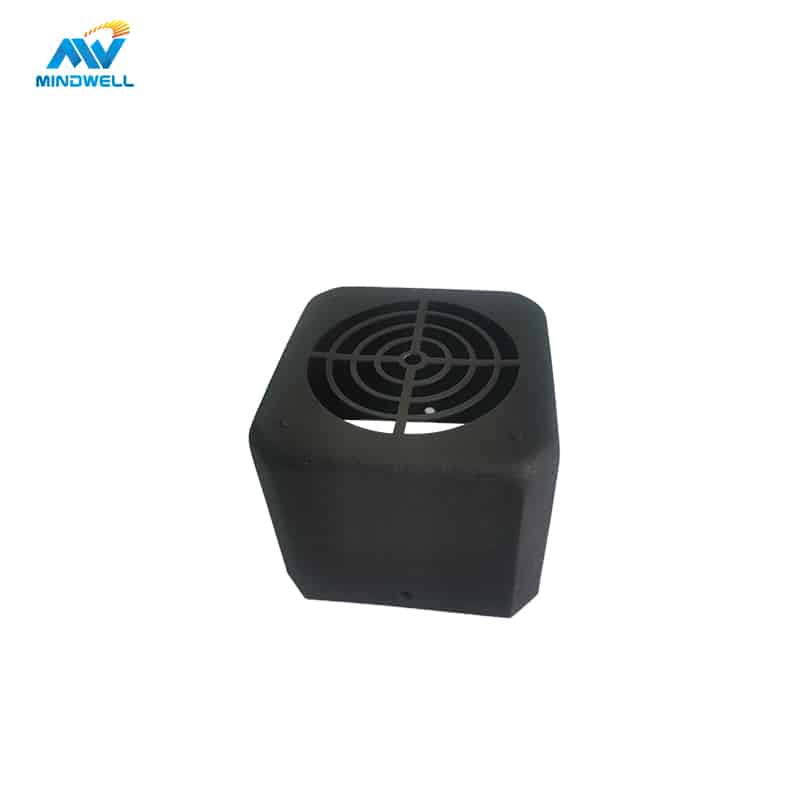Раскройте секреты литых автозапчастей и узнайте, как они улучшают характеристики автомобиля. Узнайте о сферах применения, преимуществах и технологиях, лежащих в основе этих прецизионных компонентов.
представить

В сложной сфере автомобильного производства литье под давлением играет жизненно важную роль, особенно в производстве высокопроизводительных автомобильных компонентов. В этом руководстве подробно рассматривается мир литых под давлением автомобильных деталей, раскрываются области их применения, преимущества и технологические инновации, которые двигают автомобильную промышленность вперед.
🔗 Расширьте свои знания в области автомобилестроения: Изучите области применения литья под давлением
Понимание литья под давлением в автомобилестроении
Эволюция технологии литья под давлением
Технология литья под давлением продолжает развиваться и эволюционировать с течением времени, чтобы адаптироваться к потребностям и изменениям в автомобильной промышленности. Вот как развивалась технология литья под давлением в автомобилестроении:
- Начальный этап: На ранних этапах технология литья под давлением использовалась в основном для производства небольших, простых металлических деталей. Из-за небольшого масштаба литейной машины производимые детали также имеют относительно небольшой размер. Технология литья под давлением на этом этапе в основном направлена на повышение эффективности производства и снижение затрат.
- Зрелая стадия: С развитием автомобильной промышленности спрос на литые детали постепенно растет. Машины для литья под давлением постепенно становятся все более крупными и сложными, способными производить большие и более сложные детали. В то же время различные аспекты технологии литья под давлением также были улучшены и оптимизированы, такие как дизайн пресс-формы, выбор материала, технология производства и т.д.
- Этап инноваций: В последние годы, в связи с непрерывным развитием науки и техники, технология литья под давлением также претерпела множество изменений. Например, новые материалы для литья под давлением, такие как алюминий, магний и другие легкие материалы, широко используются для улучшения качества и производительности деталей. В то же время инновации в технологии литья под давлением включают в себя технологию цифрового двойника, 3D-печать и другие технологии, которые позволяют реализовать изготовление деталей сложной формы и повысить эффективность и качество производства.
Технология литья под давлением прошла множество этапов развития и эволюции в автомобилестроении. От традиционных методов литья под давлением до современных инновационных процессов, технология литья под давлением постоянно совершенствуется, чтобы адаптироваться к потребностям и изменениям в автомобильной промышленности. В будущем, благодаря постоянному развитию и инновациям в области науки и техники, технология литья под давлением будет продолжать развиваться и эволюционировать, открывая новые возможности и ставя новые задачи перед автомобилестроительной отраслью.
Важность точности автозапчастей
При производстве автомобильных деталей точность является решающим фактором. Для технологии литья под давлением точность напрямую влияет на качество, производительность и безопасность деталей. Вот как точность играет ключевую роль в литые автомобильные детали:
- Обеспечение качества: Точность - ключевой фактор в обеспечении качества литых под давлением деталей. В процессе литья под давлением необходимо точно контролировать конструкцию и точность изготовления формы, контроль и заполнение материалами, регулировку давления и температуры и т. д., чтобы точность размеров и качество поверхности конечного продукта соответствовали требованиям. Только достигнув определенного уровня точности, можно гарантировать надежность и срок службы компонентов.
- Улучшение эксплуатационных характеристик: Точность также напрямую влияет на производительность литых деталей. Например, высокоточные литые детали могут уменьшить трение и износ, повысить эффективность трансмиссии и срок службы. Кроме того, точность может повысить прочность, жесткость и усталостную прочность деталей, тем самым улучшая общие эксплуатационные характеристики автомобиля.
- Гарантия безопасности: Точность литых автозапчастей также напрямую связана с безопасностью автомобиля. Например, высокоточные компоненты тормозной системы могут обеспечить точность и своевременность торможения, повысить эффективность торможения и безопасность автомобилей. Кроме того, точность может обеспечить безопасную работу других ключевых компонентов, таких как двигатели, коробки передач и т.д., и избежать проблем с безопасностью, вызванных отказом компонентов.
- Снижение затрат: Повышение точности литых деталей позволяет снизить сложность и время последующей обработки и обрезки, а также уменьшить производственные затраты. В то же время высокоточные детали позволяют сократить количество брака и ремонтов, тем самым снижая общие эксплуатационные расходы.
- Реализация инновационных разработок: Технология высокоточного литья под давлением позволяет поддерживать более сложный и изысканный дизайн автомобильных деталей. Дизайнеры могут внедрять больше инновационных идей в дизайн продукции для достижения более эффективных, легких и высокопроизводительных автомобильных деталей.
Точность играет жизненно важную роль в литых автомобильных деталях. Повышение уровня контроля точности процесса литья под давлением позволяет обеспечить качество, производительность и безопасность деталей, снизить производственные затраты и поддержать реализацию инновационных разработок. Таким образом, для технологии литья под давлением постоянное повышение точности является важным способом достижения устойчивого развития автомобильной промышленности.
Материалы, формирующие будущее: сплавы для литья под давлением
Литейные сплавы играют жизненно важную роль в автомобилестроении, поскольку они напрямую влияют на долговечность, прочность и общую производительность автомобильных компонентов. Вот некоторые широко используемые сплавы для литья под давлением и их характеристики:
- Алюминиевый сплав: Алюминиевый сплав - один из наиболее часто используемых сплавов в литье под давлением. Он обладает такими преимуществами, как малый вес, коррозионная стойкость и хорошая теплопроводность. В автомобилестроении алюминиевые сплавы широко используются для производства автомобильных деталей, таких как детали двигателя, детали тормозной системы и т.д. Прочность и твердость алюминиевых сплавов относительно невысоки, но могут быть улучшены за счет термообработки и добавления легирующих элементов.
- Цинковый сплав: Цинковый сплав - относительно недорогой сплав для литья под давлением, обладающий хорошими литейными свойствами и коррозионной стойкостью. В автомобилестроении цинковый сплав в основном используется для изготовления деталей внешнего вида и декоративных деталей, таких как колеса, дверные накладки и т.д. Цинковые сплавы обладают относительно низкой прочностью и твердостью, что делает их непригодными для использования в производстве несущих компонентов.
- Магниевый сплав: Магниевый сплав - это легкий, высокопрочный литой сплав с хорошими литейными свойствами и коррозионной стойкостью. В автомобилестроении магниевые сплавы широко используются для изготовления несущих деталей и деталей внешнего вида, таких как капоты, двери и т.д. Магниевый сплав обладает более высокой прочностью и твердостью, чем алюминиевый и цинковый сплавы, однако его стоимость также относительно высока.
- Стальной сплав: Стальной сплав - это литой сплав с высокой прочностью, высокой твердостью и хорошей коррозионной стойкостью. В автомобилестроении стальные сплавы в основном используются для изготовления несущих деталей и деталей безопасности, таких как рамы, подушки безопасности и т.д. Стоимость стальных сплавов относительно невысока, но качество литья оставляет желать лучшего, и процесс литья необходимо строго контролировать.
При выборе сплава для литья под давлением необходимо учитывать такие факторы, как назначение деталей, требования к производительности и стоимость. Различные сплавы имеют разные преимущества и недостатки, и выбирать их нужно в зависимости от реальных условий. Например, для несущих деталей, требующих высокой прочности и коррозионной стойкости, можно выбрать магниевые сплавы или стальные сплавы; для декоративных деталей, требующих хороших характеристик литья и красивого внешнего вида, можно выбрать цинковые сплавы или алюминиевые сплавы.
В целом, литейные сплавы являются неотъемлемой частью автомобильного производства. Различные сплавы обладают разными характеристиками и областями применения, и их необходимо выбирать в зависимости от реальных условий. С постоянным развитием науки и техники будущие литейные сплавы станут более эффективными, экологически чистыми и устойчивыми, открывая новые возможности и проблемы для автомобильной промышленности.
Применение в автомобильной промышленности
Компоненты двигателя: обеспечение мощностных характеристик
Технология литья под давлением играет важную роль в производстве компонентов двигателей и позволяет повысить мощность и эффективность двигателей внутреннего сгорания. Ниже перечислены области применения литья под давлением в компонентах двигателей:
- Головка цилиндра: Головка цилиндра - это важная часть двигателя, которая окружает цилиндр и вмещает поршень. Технология литья под давлением может быть использована для производства головок цилиндров. Благодаря высокоточному контролю пресс-форм и материалов можно гарантировать, что размеры и форма головки блока цилиндров будут соответствовать требованиям. Литые головки цилиндров отличаются легкостью и высокой прочностью, что повышает мощность и эффективность двигателя.
- Поршень: Поршень - один из основных компонентов двигателя, который вместе с цилиндром образует камеру сгорания. Технология литья под давлением может использоваться для производства поршней, обеспечивая их легкость и миниатюрность за счет точного контроля формы и материала. Литые под давлением поршни обладают высокой прочностью, коррозионной стойкостью и хорошей теплопроводностью, что повышает производительность и надежность двигателя.
- Коленчатый вал: Коленчатый вал - ключевой компонент двигателя, служащий для передачи мощности и приведения в движение поршня. Технология литья под давлением может использоваться для производства коленчатых валов, обеспечивая высокую прочность, легкость и коррозионную стойкость благодаря высокоточному контролю формы и материала. Коленчатые валы, изготовленные методом литья под давлением, повышают мощность и эффективность двигателя и снижают расход топлива.
- Распределительный вал: Распределительный вал является важным компонентом двигателя и используется для управления открытием и закрытием клапанов. Технология литья под давлением может использоваться для производства распределительных валов, достигая высокой точности и миниатюризации благодаря точному контролю формы и материала. Литые под давлением распредвалы обладают высокой прочностью, коррозионной стойкостью и хорошей теплопроводностью, что повышает производительность и надежность двигателя.
- Маховик: Маховик является важным компонентом двигателя и используется для накопления и высвобождения кинетической энергии. Технология литья под давлением может использоваться для производства маховиков, обеспечивая высокую прочность, легкость и коррозионную стойкость благодаря точному контролю формы и материала. Маховики, изготовленные методом литья под давлением, повышают эффективность работы двигателя и экономию топлива.
Корпус трансмиссии: Бесшовная трансмиссия
Литье под давлением играет важную роль в производстве корпусов коробок передач. Благодаря точному литью можно получить высококачественные и высокоэффективные корпуса коробок передач, что помогает добиться бесперебойной передачи мощности и оптимизировать работу автомобильных коробок передач.
Во-первых, литье под давлением позволяет изготавливать корпуса редукторов сложной формы и структуры. Благодаря хорошей текучести и способности расплавленного металла к заполнению в процессе литья под давлением можно изготавливать тонкостенные и сложные конструкции, обеспечивая легкое и эффективное производство. Такая сложная структура может улучшить характеристики коробки передач и повысить эффективность трансмиссии.
Во-вторых, корпус редуктора, изготовленный методом литья под давлением, обладает высокой точностью и стабильным качеством. Технология точного литья позволяет обеспечить точный контроль размеров отливки, тем самым обеспечивая точность сборки и производительность коробки передач. Кроме того, равномерное заполнение и застывание расплавленного металла в процессе литья под давлением позволяет уменьшить такие дефекты, как концентрация напряжений и усадочные полости, а также повысить надежность и срок службы редуктора.
Наконец, литой корпус коробки передач позволяет производить ее по индивидуальному заказу. Различные модели и марки автомобилей предъявляют разные требования к характеристикам и дизайну коробок передач, а технология литья под давлением позволяет адаптировать производство к различным потребностям. Такая гибкость позволяет автопроизводителям быстро корректировать производственные планы в зависимости от рыночного спроса, чтобы удовлетворить потребности различных клиентов.
Шасси и структурные компоненты: Баланс между прочностью и весом
Литье под давлением играет важную роль в производстве шасси и структурных компонентов для достижения идеального баланса между прочностью и весом, что имеет решающее значение для безопасности и устойчивости автомобиля.
Во-первых, литье под давлением позволяет производить высокопрочные шасси и структурные компоненты. Благодаря хорошей текучести и способности расплавленного металла к заполнению в процессе литья под давлением можно изготавливать детали с тонкими стенками и сложной структурой, что позволяет добиться легкого и эффективного производства. В то же время равномерное заполнение и застывание расплавленного металла в процессе литья под давлением позволяет уменьшить такие дефекты, как концентрация напряжений и усадочные полости, а также повысить прочность и надежность компонентов. Такое высокопрочное шасси и структурные компоненты повышают безопасность и устойчивость автомобиля.
Во-вторых, литье под давлением позволяет производить шасси и структурные компоненты со сложной структурой и точными размерами. Технология точного литья позволяет точно контролировать размеры отливки, обеспечивая тем самым точность сборки и эксплуатационные характеристики компонентов. Точные размеры и структура снижают трение и вибрацию между компонентами, улучшая устойчивость и комфорт автомобиля.
Кроме того, литье под давлением позволяет наладить массовое производство. Благодаря хорошей текучести и наполняемости расплавленного металла в процессе литья под давлением можно изготавливать множество деталей и добиваться массового производства. Такая возможность массового производства позволяет снизить производственные затраты и повысить эффективность производства, удовлетворяя рыночный спрос на шасси и структурные компоненты автомобилей.
Наконец, литье под давлением также позволяет производить продукцию по индивидуальным заказам. Различные модели и марки автомобилей предъявляют разные требования к характеристикам и дизайну шасси и конструктивных элементов, а технология литья под давлением позволяет адаптировать производство в соответствии с различными потребностями. Такая гибкость позволяет автопроизводителям быстро корректировать производственные планы в зависимости от рыночного спроса, чтобы удовлетворить потребности различных клиентов.
3. Технология обработки поверхности
Die-casting surface treatment technology is critical to improving the aesthetics and corrosion resistance of automotive components. The following are several commonly used surface treatment technologies:
- Shot peening: Shot peening is a surface strengthening process that sprays projectiles onto the surface of the workpiece through high-speed airflow, causing plastic deformation on the surface of the workpiece, thereby improving the fatigue strength and corrosion resistance of the workpiece. Shot peening can be applied to die-cast automotive parts, such as cylinder heads, pistons, etc., to enhance their corrosion resistance and aesthetics.
- Powder spraying: Powder spraying is a commonly used surface coating process. The powder coating is evenly sprayed onto the surface of the workpiece through electrostatic spraying or fluidized bed spraying to form a dense coating. Powder coating can be applied to die-cast automotive parts, such as body panels, wheels, etc., to improve their corrosion resistance and aesthetics.
- Electroplating: Electroplating is a process that deposits metal onto the surface of a workpiece through the principle of electrolysis. It can form a layer of metal coating with special properties on the surface of the workpiece. Electroplating can be applied to die-cast automotive parts, such as bushings, gears, etc., to improve their corrosion resistance and wear resistance.
- Anodizing: Anodizing is a process that oxidizes the metal surface into an oxide film through the principle of electrolysis. It can form a dense oxide film on the metal surface to improve the corrosion resistance and aesthetics of the metal. Anodizing can be applied to die-cast automotive parts, such as aluminum alloy parts, to improve their corrosion resistance and aesthetics.
Die-casting surface treatment technology is critical to improving the aesthetics and corrosion resistance of automotive components. Different surface treatment technologies have different characteristics and application ranges, and need to be selected according to actual conditions. With the continuous advancement and innovation of science and technology, future surface treatment technology will be more efficient, environmentally friendly and sustainable, bringing more opportunities and challenges to the automobile manufacturing industry.

4. Frequently Asked Questions
What materials are commonly used for die-cast auto parts?
Aluminum, zinc and magnesium alloys are commonly used for die-cast automotive parts due to their lightweight nature and excellent mechanical properties.
How do die castings improve vehicle fuel efficiency?
The precision and lightweight properties of die-cast components help reduce vehicle weight and improve fuel efficiency by reducing energy consumption.
Are die-cast auto parts environmentally friendly?
Yes, die casting is an environmentally friendly process as it minimizes waste and the materials used are recyclable and consistent with sustainable manufacturing practices.
Can die castings be used for electric vehicle parts?
Of course, die casting is widely used in the manufacture of electric vehicle parts, contributing to their lightweight design and overall efficiency.
How do die castings ensure the safety of automobile structural parts?
The precision of the die-cast parts ensures that the structural components meet strict safety standards, providing durability and reliability in a variety of driving conditions.
What advancements are expected in die-casting technology for automotive applications?
Continuing advancements in die-casting technology include improved alloy formulations, increased automation, and increased efficiency in the production of complex parts.
Conclusion: Promoting the future of excellent automobiles
To sum up, die-cast automotive parts have become the backbone of modern automotive manufacturing, embodying precision, efficiency and innovation. As the automotive industry evolves, the role of die casting continues to drive excellence and shape the vehicles of the future.






